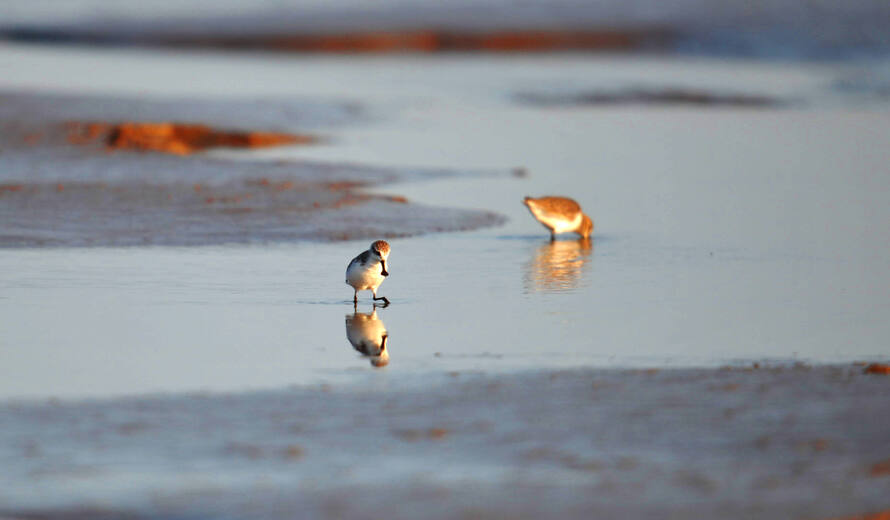World Migratory Bird Day, 12 October: Be the Solution to Plastic Pollution
This year’s World Migratory Bird Day is dedicated to highlighting the problem of pollution with the theme, ‘Protect Birds: Be the Solution to Plastic Pollution.’
Waste and pollution are harmful to many World Heritage sites. Increased tourism means that more people are leaving trash at the world’s most iconic places. World Heritage sites are key stopover sites for birds, so the effective conservation of these sites is crucial for migratory bird conservation on a global scale. We therefore need to learn to visit sites without leaving a trace behind.
Marine pollution in particular, is also a problem at many World Heritage sites, where waste such as plastics wash up on beaches. Birds, turtles and marine mammals get entangled in marine litter or mistake it for food, leading to high mortality rates.
Several World Heritage sites which are flyways for migratory birds have created clean-up and awareness programmes, which serve as a model for solving plastic pollution in protected areas around the world.
During the 43rd session of the World Heritage Committee, Migratory Bird Sanctuaries along the Coast of Yellow Sea-Bohai Gulf of China (Phase I) (China) was inscribed on the World Heritage List. The intertidal areas of the Yellow Sea, Gulf of Bohai are of global importance for the gathering of many migratory bird species that use the East Asian-Australasian flyway. Large gatherings of birds, including some of the world's most endangered species, depend on the coastline as a stopover to moult, rest, winter or nest.
In iSimangaliso Wetland Park (South Africa) part of the African-Eurasian Flyway, there are regular clean-ups and awareness programs to protect the beaches along its 220km of coastline. A public works programme, ‘Working for the Coast’, regularly cleans trash from the coast, maintains visitor facilities and removes invasive alien vegetation.
While part of the problem can be addressed at the local level through clean-ups and other initiatives, a core part of the solution in reducing marine litter at World Heritage sites will require strategic global action. Last year, World Heritage marine managers and marine litter experts from around the world met at the Island of Norderney in the Wadden Sea (Denmark, Germany, Netherlands), also part of the African-Eurasian Flyway, World Heritage site to discuss impacts of marine litter and plastics.
Despite this progress, there is still a long way to go. Ecosystems and biodiversity are deteriorating faster than at any time in human history, undermining humanity’s well-being and future existence. This was the alarming message recently in the Intergovernmental Panel on Climate Change (IPCC) Special Report on the Ocean and Cryosphere in a Changing Climate. The report provides a comprehensive analysis of climate change effects on the ocean and the Earth's frozen areas. The report makes it clear that the ocean is in deep trouble and we must take action to regenerate it.
Cleaning up is just a start—we also need to recycle and not put waste in our irreplaceable World Heritage sites. The future of migratory birds depends on it.
Mechtild Rössler
Director
UNESCO World Heritage Centre
